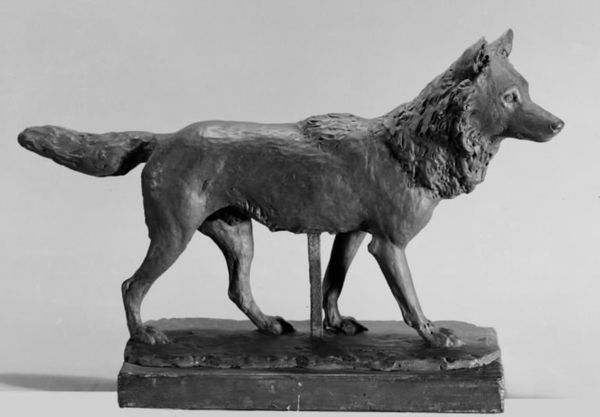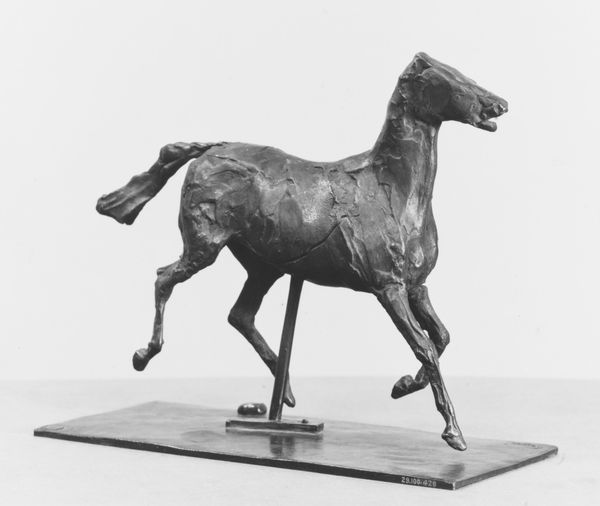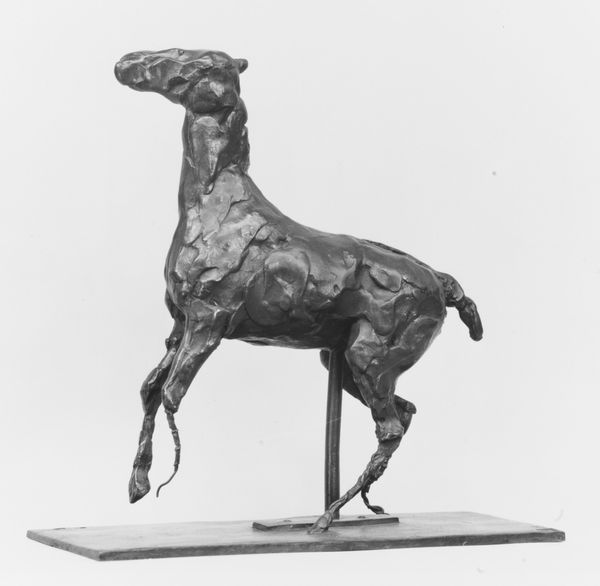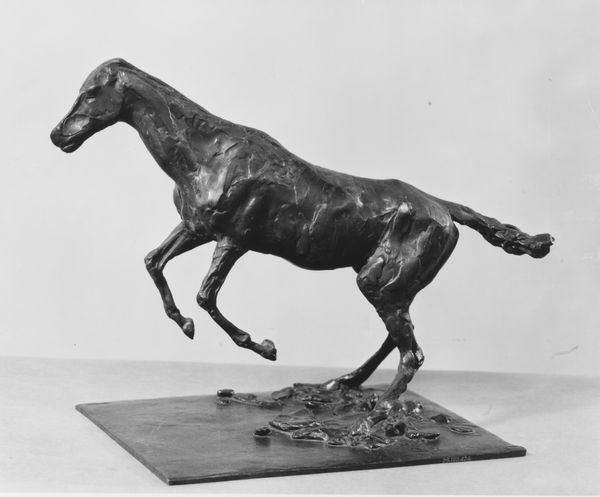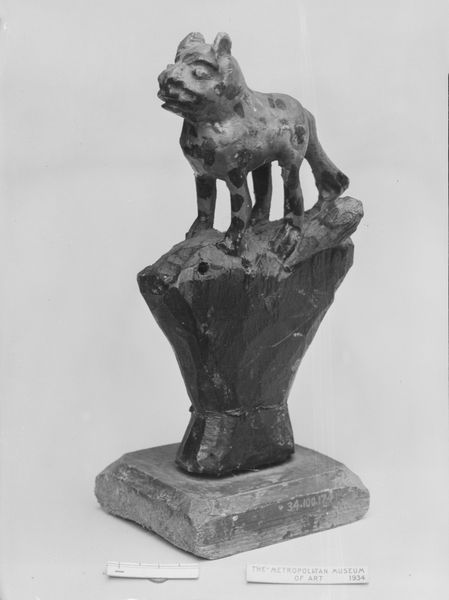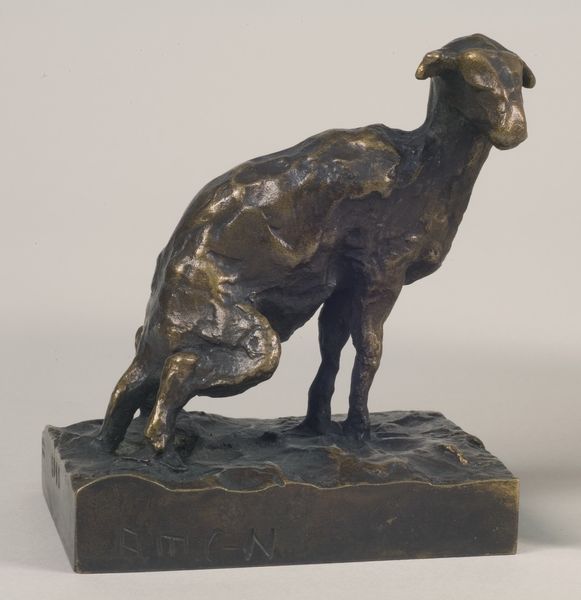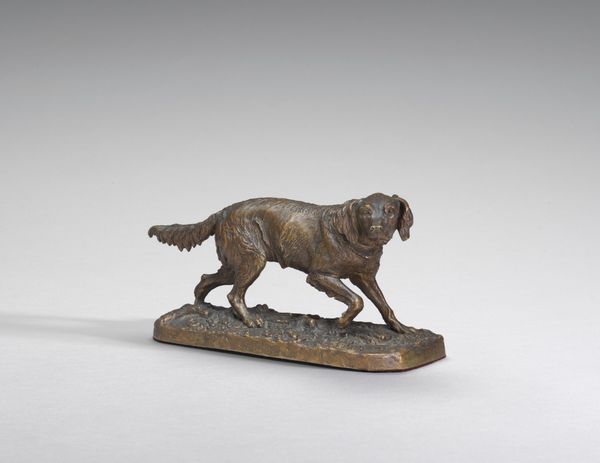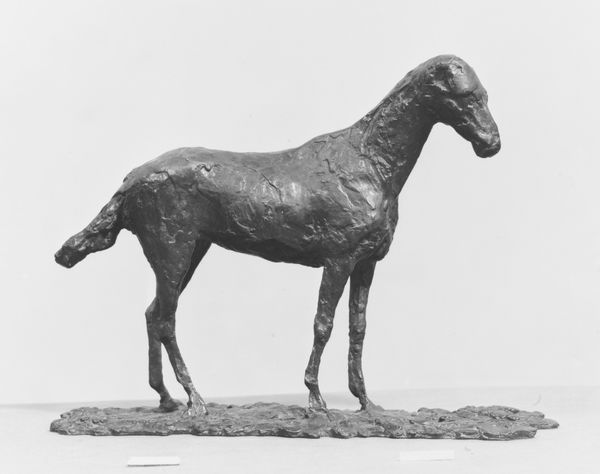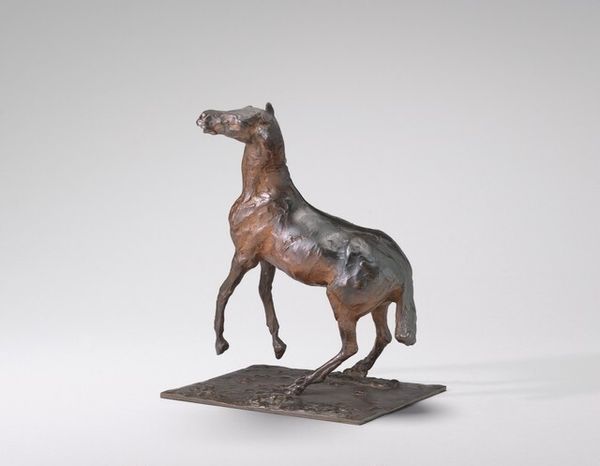
Dimensions: 3-7/8 x 7-3/8 x 2-5/16 in. (9.8 x 18.7 x 5.9 cm.)
Copyright: Public Domain
Curator: Welcome. Today, we are looking at Edgar Degas’s bronze sculpture, "Draught Horse," believed to have been created sometime between 1850 and 1920. It’s currently part of the collection at the Metropolitan Museum of Art. Editor: It's surprisingly visceral, isn't it? Despite the smooth bronze, there’s a palpable sense of movement and power in the horse's strained muscles and posture. Curator: Indeed. Degas was fascinated by capturing movement, something you can see across his painting and sculptural work, of course. In this work he seems most focused on the brute strength. This interest comes as he's also exploring similar industrial settings. This piece really speaks to the historical context, reflecting the rising importance of work horses to that modern moment. Editor: Yes, the pose speaks to the historical moment, that transitional time of agriculture versus mechanization and technology. We often overlook how these animals' labor has helped shape civilization and this honors that. I am struck by the inherent exploitation in that relationship. Was Degas commenting on that as well? Or, possibly romanticizing their place? Curator: I think he captures their significance. And let's remember the material – bronze was a classic art material, right? By using that Degas kind of enshrines the subject within the cultural dialogue as an icon of labor, placing alongside celebrated depictions of athletes or figures of renown in history. It bridges artistic traditions. Editor: And how interesting that by bringing this topic into the traditional medium, Degas elevates a traditionally disregarded segment into this pantheon. How might viewers who relied on the strength of work horses feel when they are faced with that visual? Curator: A useful question to pose. There has been scholarly analysis as well that has suggested that Degas was probably motivated by both capturing motion itself, and in what it meant at this juncture to move between these changing sectors. This bronze represents this broader scope within modernity, too. Editor: Ultimately, "Draught Horse" does offer so much to reflect on from labor exploitation to the historical moment, and its implications today. Curator: It is a remarkable sculpture that allows us to consider labor, culture, art and their intersection in a society undergoing drastic transformations.
Comments
No comments
Be the first to comment and join the conversation on the ultimate creative platform.
